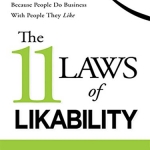Using the Cs for Virtual Meetings and Business Blogs
“Meetings should matter, especially when those meetings are taking place exclusively online,” author Paul Axtell posts in the book Make Virtual Meetings Matter. No one wants to be called in for a meeting that could have been an email.
You can transform those opinions by holding a meeting that is efficient and productive, useful and important, Axell explains. Leadership development consultant Jill Hinrichs tells how to use the Cs, each of which can be applied to business blog content writing:
Clarity
Make clear what the purpose of the conversation or meeting is and the outcome you are committed to producing. Keep tasks short, clear, and actionable.
The job of a blog post headline is to get people to read your article, but you must respect the reader experience. The expectations set up in the title must be fulfilled in the content, which itself must remain focused.
Connection
What is our relationship to each other and what is our shared experience? Who are you and with whom have you been dealing. What is our shared experience?
At Say It For You, I tell newbie blog content writers: “Everything about your blog should be tailor-made for that customer – the words you use, how technical you get, how sophisticated your approach, the title of each blog entry – all of it.” Since we, as ghostwriters, have been hired by clients to tell their story online to their target audiences, we need to do intensive research, taking guidance from the client’s experience and expertise.
Candor
What is the relevant information we need to have in order to make good decisions? Create trust and share values, Hinrichs advises.
Blog readers want to feel trust in your know-how and professionalism and you won’t be able to help them until that trust happens. Readers who visit your blog are trying to learn about the business owner or practitioner behind the blog. One way to address that need is to use opinion to clarify what differentiates this business or practice from its peers. The blog has to add value, not just a promise of value should the reader convert to a buyer, but real value in terms of information, skill enhancement, or a new way of looking at the topic. Searchers will sense that they’ve come to a provider they can trust.
Commitment
What action will we commit to as a result of the conversation? There should be a clear next step.
In corporate blogging for business, the “ask” comes in the form of calls to action. Offering a reason for the requested action greatly improves the chances of having your request fulfilled. In both meetings and blogs, participants need to know how they can measure success.
If our blogging Calls to Action are going to be effective, I realized, it’s up to us blog content writers to offer workable benchmarks, explaining the “as measured by”.






Follow us online!